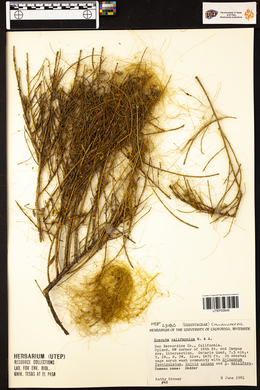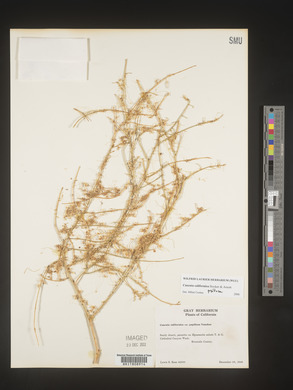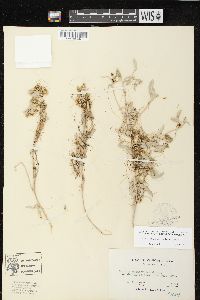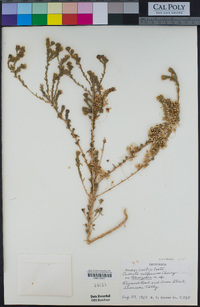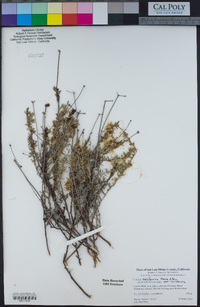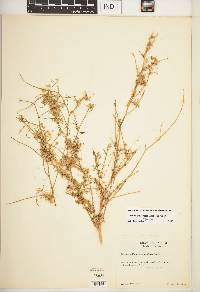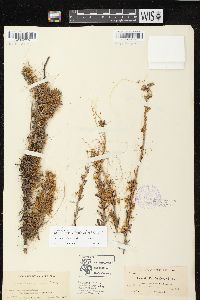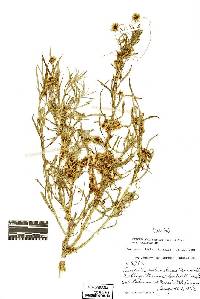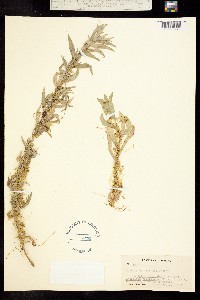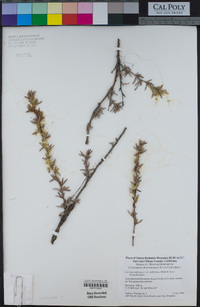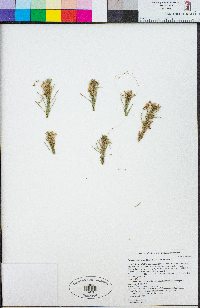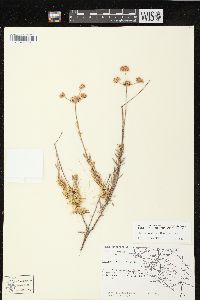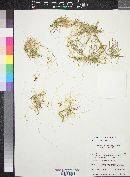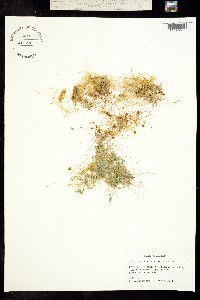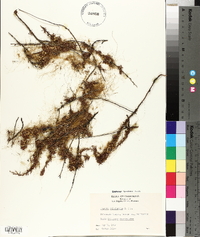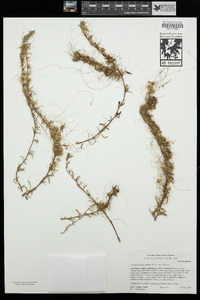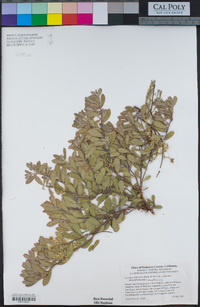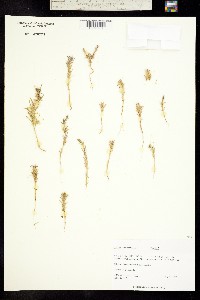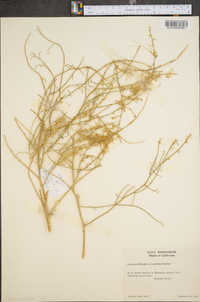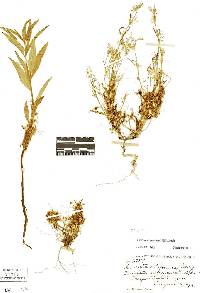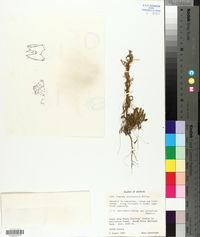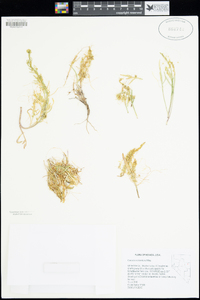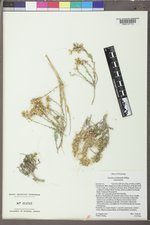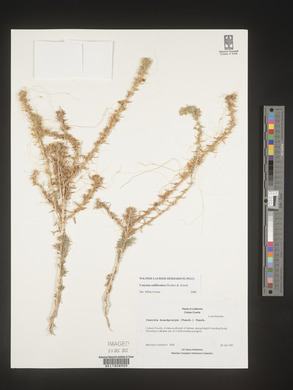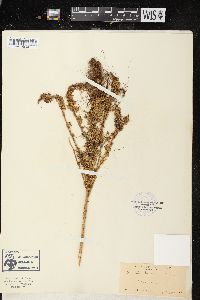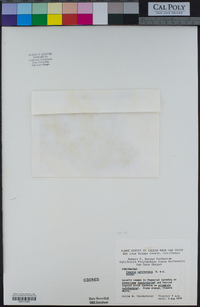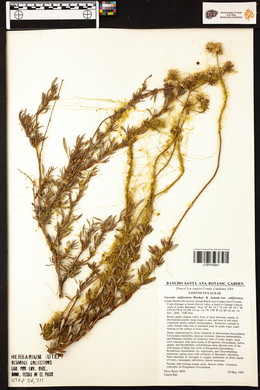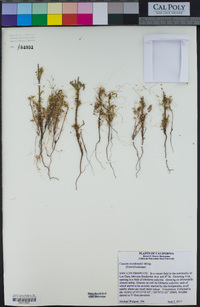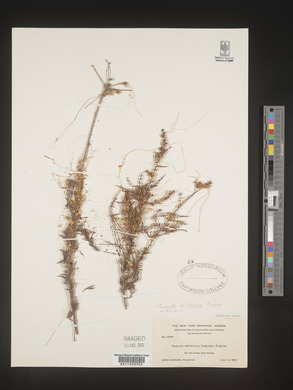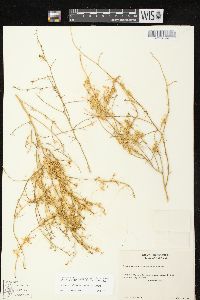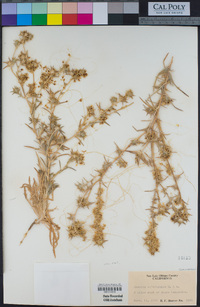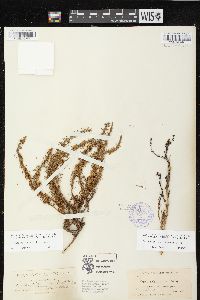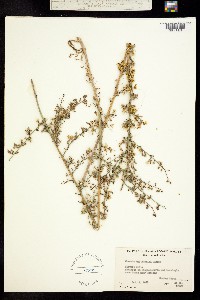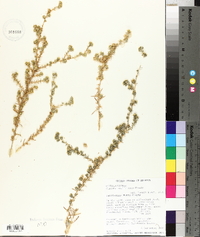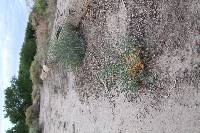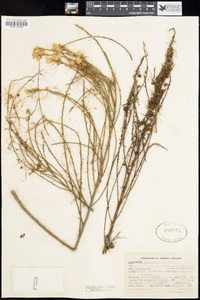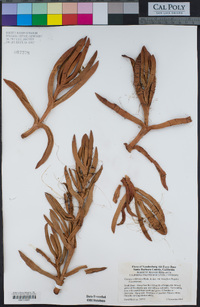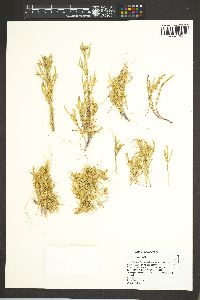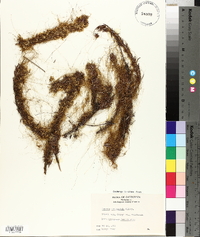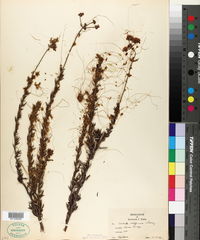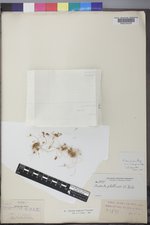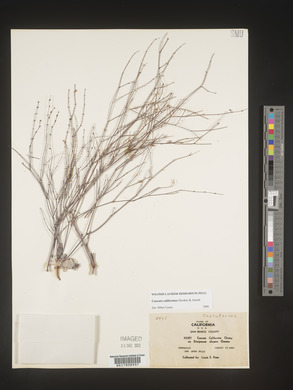
|
|
|
|
Family: Convolvulaceae
Chaparral Dodder, more...California dodder
[Grammica californica (Choisy) Hadac & Chrtek] |
Jepson 2012, Kearney and Peebles, 1969, McDougall 1973 Duration: Perennial Nativity: Native Lifeform: Vine General: Perennial holoparasitic, vines, stems light yellow to orange, (rarely green or red) glabrous, thread-like and forming small to large mats atop hosts, generally not in contact with the ground, attaching to the host by many small, specialized roots (haustoria) along stems. Leaves: Alternate, very small and scale-like, to 2 mm long. Flowers: Creamy white and translucent, sometimes shining and minutely sparkling, with exserted orange or yellow anthers, corollas bell-shaped (campanulate) 5-parted, 3-5.5 mm long, corolla tubes 1.5-2.5 mm long, cup-shaped to cylindric, lobes lanceolate with acute tips, erect to reflexed and alternate stamens, persistent and usually withering in fruit, calyx creamy white, bell-shaped, to 5.5 mm long, fused at the base and divided above, lobes triangular-ovate to lanceolate with overlapping bases, entire margins, and acute tips, membraneous or fleshy, persistent, stamens without subtending scales, ovary superior with 2 chambers, each with 2-ovules, styles 2, to 2 mm long, free and persistent, stigmas 2, spheric and persistent, anthers orange to yellow, oblong to linear and to 1 mm long, flowers borne in heads or pannicle-like infloresences in groups of 3-20 flowers, pedicels to 3 mm long. Fruits: Spheric or ovoid-conic capsule more or less enclosed by the corollas, to 2.5 mm long and wide, tips pointed or not, not thickened or raised around opening between styles, nor translucent. Seeds 1-4, widely elliptic to obovate, to 1 mm long and wide. Ecology: Found in Arizona in Topock in Mohave county, and is reportedly rare in Arizona. Host plants include Eriogonum, Abronia, Dalea, Foeniculum, Asclepias, and Franseria. Distribution: Arizona, California, Colorado, Idaho, Nevada, Oregon, Utah, Washington, Wyoming, Notes: This strange parasitic plant looks like a yellowish-orange loosely constructed bird's nest on top of plants, sometimes growing large and covering the host plant, drying white and stiff, generally persistent even when desceased, stems when fresh with a slightly rubbery feel. Differs from C. salina in that C. californica has more flowers in its pannicle-like infloresences, C. salina also has umble-like infloresences, also C. salina has 1 seed per capsule, C. californica has 1-4. Other keys to this species are the lack of scales below the stamens, the triangular-ovate to lanceolate calyx lobes, lanceolate corolla lobes, and acute perianth parts. Kearney and Peebles describe this as an attractive species, easily recognizable bu its lanceolate, reflexed [to erect] corolla lobes, and lack of scalces below the stamens (infrastamineal). Ethnobotany: Infusion of plant, picked from buckwheat plants, taken for black widow spider bites, chewed stem juice or powdered plant snuffed up the nose for nosebleeds, and handfuls of plant used as scouring pads for cleaning. Synonyms: None Editor: LCrumbacher2012 Etymology: Cuscuta is a name of Arabic derivation meaning "dodder", and californica means of or from California. |
This project was made possible in part by the Institute of Museum and Library Services [MG-70-19-0057-19].
Powered by Symbiota



